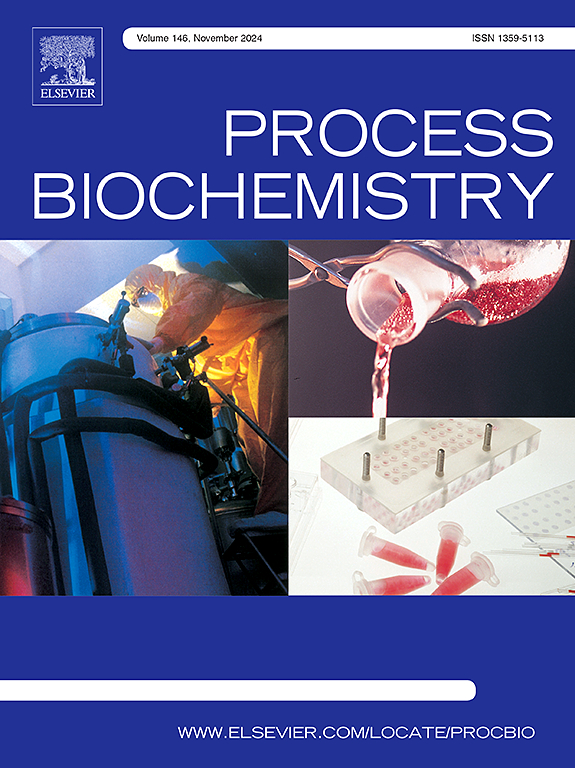RSM-based optimization and scale-up production of hIL-2 in Escherichia coli
IF 3.7
3区 生物学
Q2 BIOCHEMISTRY & MOLECULAR BIOLOGY
引用次数: 0
Abstract
Human interleukin 2 (hIL-2) has become a pivotal molecule widely used in the treatment of various diseases. The development of a robust and highly productive high cell density cultivation process for producing hIL-2 from inclusion bodies represents a promising and attractive strategy for its commercial production. In this study, a 12-bioreactor 250 mL DASbox mini bioreactor system was employed to develop a model using Response Surface Methodology (RSM) aimed at understanding the impacts of cultivation parameters on cell growth and product yiled as well as maximizing hIL-2 production. The optimized process was further validated in a 5-L stirred tank bioreactor: an induction temperature of 31.3°C, an isopropyl β-D-1-thiogalactopyranoside (IPTG) concentration of 1.0 mM, a post-induction feeding rate of 103.80 mL/h, and an induction OD600 of 150.0. The maximum hIL-2 titer achieved 4.90 g/L, which correlated well with the predicted range. Subsequent solubilization and in vitro refolding process resulted in hIL-2 purity exceeding 99 %, and a the bioactivity of 0.88 × 107 U/mL, comparable to that of commercial products. This study demonstrates the effectiveness of optimizing cultivation parameters to enhance hIL-2 yield and highlights the value of employing statistical methods as a powerful tool to guide manufacturing operations in recombinant protein production.
求助全文
约1分钟内获得全文
求助全文
来源期刊

Process Biochemistry
生物-工程:化工
CiteScore
8.30
自引率
4.50%
发文量
374
审稿时长
53 days
期刊介绍:
Process Biochemistry is an application-orientated research journal devoted to reporting advances with originality and novelty, in the science and technology of the processes involving bioactive molecules and living organisms. These processes concern the production of useful metabolites or materials, or the removal of toxic compounds using tools and methods of current biology and engineering. Its main areas of interest include novel bioprocesses and enabling technologies (such as nanobiotechnology, tissue engineering, directed evolution, metabolic engineering, systems biology, and synthetic biology) applicable in food (nutraceutical), healthcare (medical, pharmaceutical, cosmetic), energy (biofuels), environmental, and biorefinery industries and their underlying biological and engineering principles.
 求助内容:
求助内容: 应助结果提醒方式:
应助结果提醒方式:


